“The Asian conical hat is a simple style of conical hat originating in East, South, and Southeast Asia, particularly Bangladesh, Bhutan, China, Cambodia, India, Indonesia, Japan, Korea, Malaysia, Myanmar, Philippines, parts of Russian Manchuria and Vietnam. It is kept on the head by a cloth (often silk) chin strap. This style of hat is used primarily as protection from the sun and rain. When made of straw or matting, it can be dipped in water and worn as an impromptu evaporative-cooling device. In the Philippines, the plain type is typically worn by farmers, but nobles crafted an ornate variation with jewels or made of turtle shells and a spike on top. It was worn by native soldiers, particularly Tagalogs, Kapampangans, and Ilocanos of the Spanish Colonial Army during the later years of Spanish colonial period. Similarly in India and Borneo, the plain conical hat was worn by commoners during their daily work, but more decoratively-colored ones were used for festivities. In Sabah the colorful conical hat is worn for certain dances while in Assam they are hung in homes as decoration or worn by the upper classes for special occasions. In China, it was typically associated with farmers, while mandarins wore tighter circular caps, especially in the winter. In Vietnam, the name is nón lá (leaf hat). Images of it were embossed on Ngoc Lu drums about 2500 to 3000 years ago. Among conical hats, the nón lá of the Vietnamese people forms a perfect right circular cone which tapers smoothly from the base to the apex. Special conical hats in Vietnam contain colourful hand-stitch depictions or words while the Huế varieties are famous for their nón bài thơ (literally: poem conical hats). These contain random poetic verses and Hán tự which can be revealed when the hat is directed above one's head in the sunlight. Today, it has become part of Vietnam's national costume”. – Wikipedia
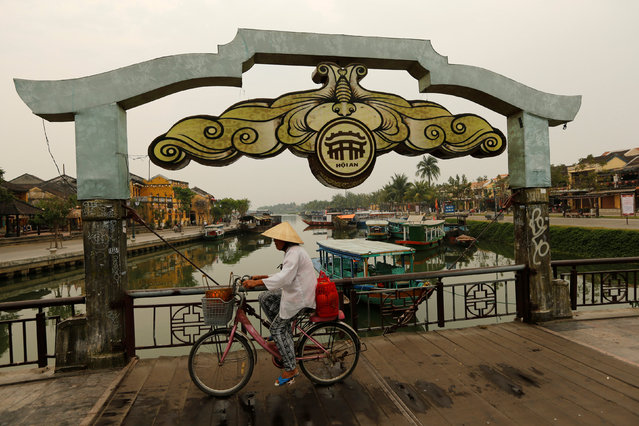
A woman wearing a traditional hat, known as a non la, cycles over a bridge crossing the Thu Bon River in Hoi An, Vietnam April 5, 2016. The non la hats are made of readily available materials such as palm leaves, tree bark and bamboo and are visible everywhere in the city, a UNESCO World Heritage site. Hoi An's history as a busy trading port is evident throughout its architecture, a mix of eras and styles, with traditional wooden Vietnamese houses, Chinese temples and French colonial buildings. (Photo by Jorge Silva/Reuters)
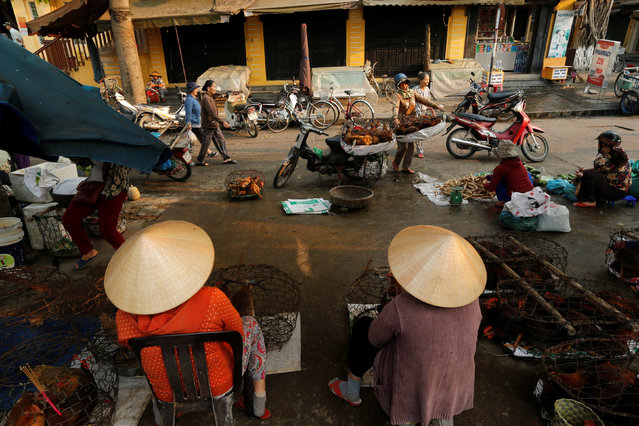
Women wearing traditional hats, known as a non la, sit in a market in Hoi An, Vietnam April 7, 2016. (Photo by Jorge Silva/Reuters)
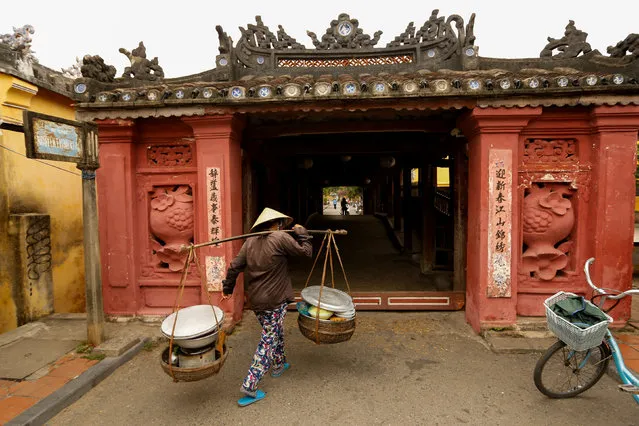
A woman wearing a traditional hat, known as a non la, sells breakfast at the Japanese Bridge in Hoi An, Vietnam April 5, 2016. (Photo by Jorge Silva/Reuters)
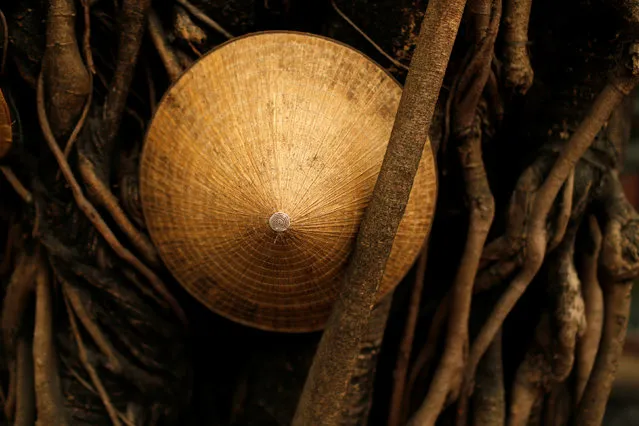
A Vietnamese traditional hat, known as a non la, is seen in a tree in Hoi An, Vietnam April 5, 2016. (Photo by Jorge Silva/Reuters)

Women wearing traditional hats, known as a non la, sit in a market in Hoi An, Vietnam April 5, 2016. (Photo by Jorge Silva/Reuters)

Women wearing traditional hats, known as non la, sit in a market in Hoi An, Vietnam April 5, 2016. (Photo by Jorge Silva/Reuters)
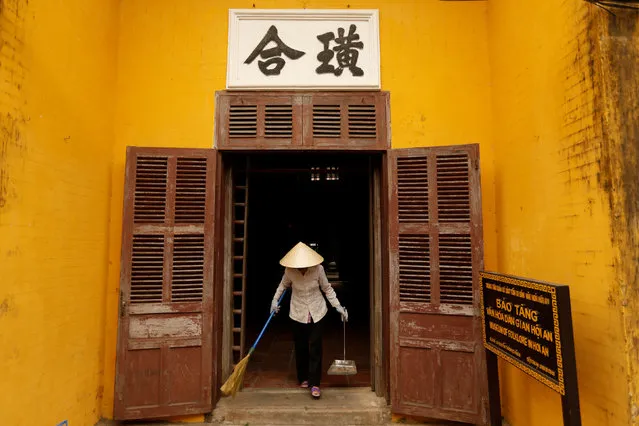
A woman wearing a traditional hat, known as a non la, sweeps an entrance of a museum in Hoi An, Vietnam April 5, 2016. (Photo by Jorge Silva/Reuters)
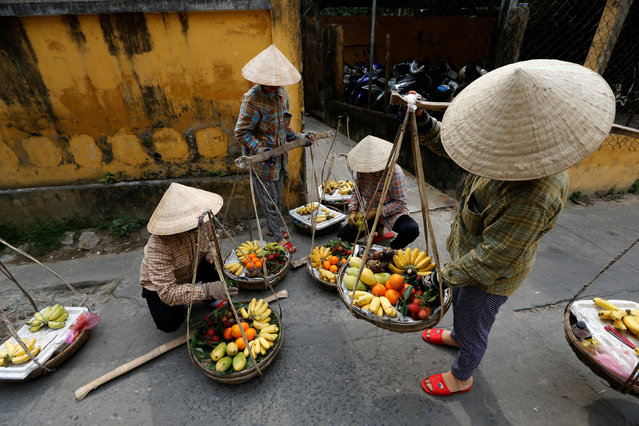
Women wearing traditional hats, known as a non la, sell fruits in Hoi An, Vietnam April 4, 2016. (Photo by Jorge Silva/Reuters)
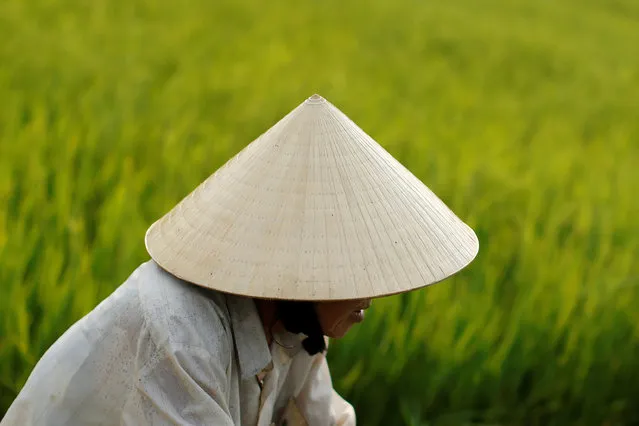
A woman wearing a traditional hat, known as a non, la sits in a rice field outside Hoi An, Vietnam April 5, 2016. (Photo by Jorge Silva/Reuters)

A woman wearing a traditional hat, known as a non la, sells food for breakfast in Hoi An, Vietnam April 5, 2016. (Photo by Jorge Silva/Reuters)
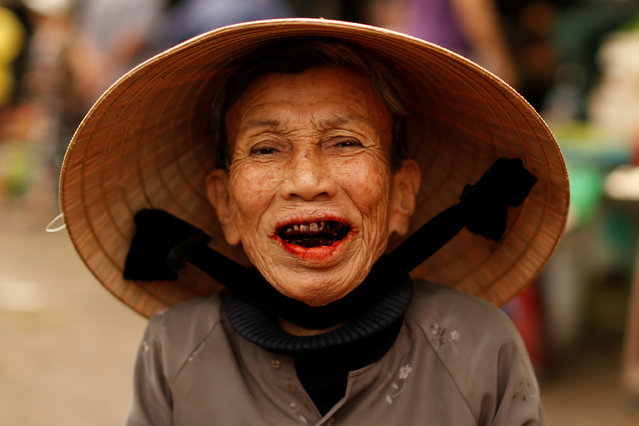
A woman wearing a traditional hat, known as a non la, poses for a portrait at a market in Hoi An, Vietnam April 5, 2016. (Photo by Jorge Silva/Reuters)
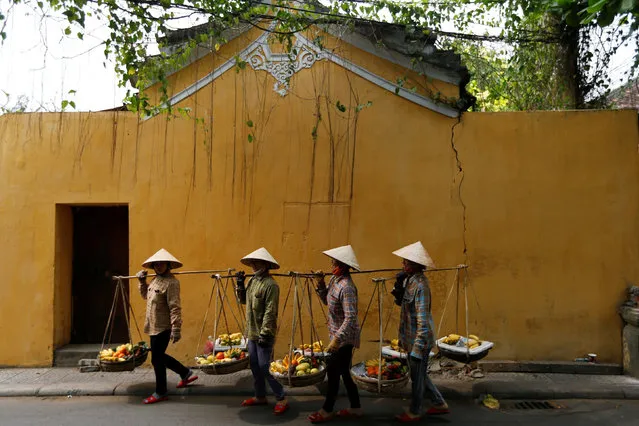
Women wearing traditional hats, known as non la, sell fruits in Hoi An, Vietnam April 4, 2016. (Photo by Jorge Silva/Reuters)
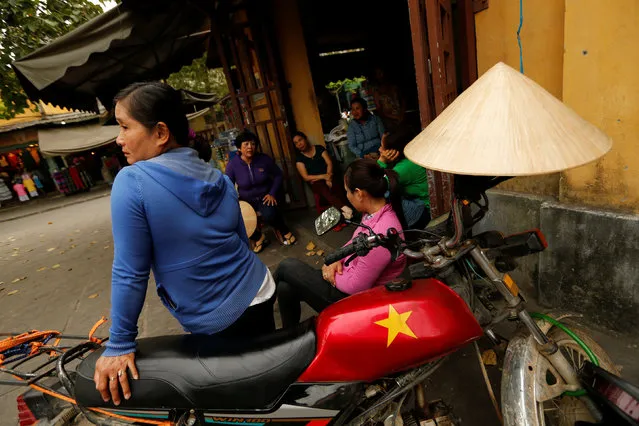
A woman sits on a motorcycle outside a market in Hoi An, Vietnam April 4, 2016. (Photo by Jorge Silva/Reuters)
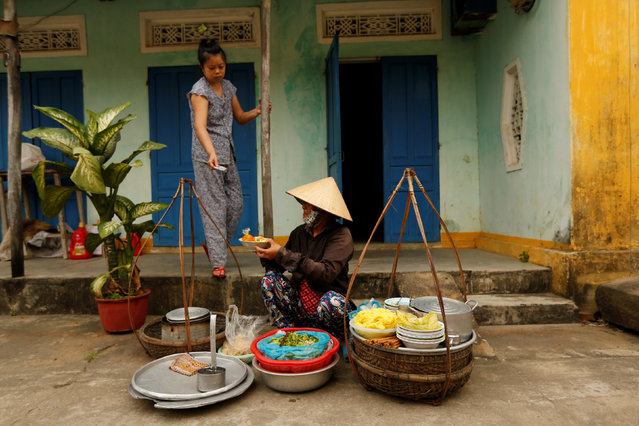
A woman wearing a traditional hat, known as a non la, sells food for breakfast in Hoi An, Vietnam April 5, 2016. (Photo by Jorge Silva/Reuters)

A woman wearing a traditional hat, known as a non la, cycles over a bridge crossing the Thu Bon River in Hoi An, Vietnam April 5, 2016. The non la hats are made of readily available materials such as palm leaves, tree bark and bamboo and are visible everywhere in the city, a UNESCO World Heritage site. Hoi An's history as a busy trading port is evident throughout its architecture, a mix of eras and styles, with traditional wooden Vietnamese houses, Chinese temples and French colonial buildings. (Photo by Jorge Silva/Reuters)

Women wearing traditional hats, known as a non la, sit in a market in Hoi An, Vietnam April 7, 2016. (Photo by Jorge Silva/Reuters)

A woman wearing a traditional hat, known as a non la, sells breakfast at the Japanese Bridge in Hoi An, Vietnam April 5, 2016. (Photo by Jorge Silva/Reuters)

A Vietnamese traditional hat, known as a non la, is seen in a tree in Hoi An, Vietnam April 5, 2016. (Photo by Jorge Silva/Reuters)

Women wearing traditional hats, known as a non la, sit in a market in Hoi An, Vietnam April 5, 2016. (Photo by Jorge Silva/Reuters)

Women wearing traditional hats, known as non la, sit in a market in Hoi An, Vietnam April 5, 2016. (Photo by Jorge Silva/Reuters)

A woman wearing a traditional hat, known as a non la, sweeps an entrance of a museum in Hoi An, Vietnam April 5, 2016. (Photo by Jorge Silva/Reuters)

Women wearing traditional hats, known as a non la, sell fruits in Hoi An, Vietnam April 4, 2016. (Photo by Jorge Silva/Reuters)

A woman wearing a traditional hat, known as a non, la sits in a rice field outside Hoi An, Vietnam April 5, 2016. (Photo by Jorge Silva/Reuters)

A woman wearing a traditional hat, known as a non la, sells food for breakfast in Hoi An, Vietnam April 5, 2016. (Photo by Jorge Silva/Reuters)

A woman wearing a traditional hat, known as a non la, poses for a portrait at a market in Hoi An, Vietnam April 5, 2016. (Photo by Jorge Silva/Reuters)

Women wearing traditional hats, known as non la, sell fruits in Hoi An, Vietnam April 4, 2016. (Photo by Jorge Silva/Reuters)

A woman sits on a motorcycle outside a market in Hoi An, Vietnam April 4, 2016. (Photo by Jorge Silva/Reuters)

A woman wearing a traditional hat, known as a non la, sells food for breakfast in Hoi An, Vietnam April 5, 2016. (Photo by Jorge Silva/Reuters)
11 May 2016 11:32:00,
post received
0 comments
